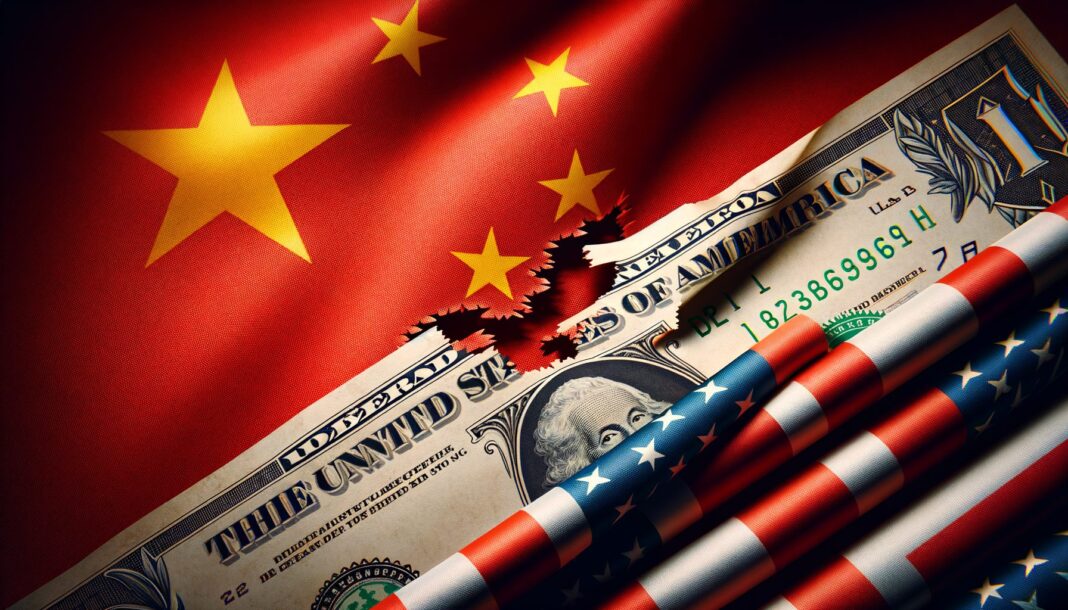By: Maryam Khan

The historic step towards global de-dollarization was made at the conclusion of the 2024 BRICS summit in Kazán, Russia. A multi-currency system more inclusive in nature is on the cards as China and its BRICS partners strive to reduce reliance on the dollar and de-dollarize internationally.
The Rise of Dollarization
It has been for over half a century that the U.S. dollar has been the world’s main reserve currency thanks to the Bretton Woods Agreement and the U.S. economy and military might. The position of the dollar has given the U.S. a lot of leverage over the global economy. But the power of the dollar squeezes other nations economically too, forcing many of those countries to look for fresh trading and reserve arrangements.
China’s Economic Strategy and the Yuan’s Growth
Since 2013, China has vigorously pushed for the internationalization of the yuan, signing more than 40 currency swap agreements with nations in Asia, Europe and Latin America. Now, nations like South Korea, Japan, Malaysia, Indonesia, Germany and the UK directly trade in yuan, without U.S. dollars as an intermediary. Second, offshore yuan centers in Hong Kong and London have helped put the yuan on the map in terms of its role in international transactions.
BRICS 2024: A United Push for De-Dollarization
At the recently concluded BRICS summit in Kazán, the bloc’s commitment to reshape the financial landscape was underscored. Leaders of Brazil, Russia, India, China, South Africa, and newly admitted BRICS members—Egypt, Ethiopia, Iran, and the UAE—agreed in principle to establish a multicurrency payment platform, a system which could dramatically reduce reliance on the dollar.
Among the most anticipated was BRICS Pay, an alternative to the Western controlled SWIFT interbank payment system. BRICS Pay is meant to facilitate cross border transactions among member states in their local currencies, thus bypassing the dollar based constraints. At the summit, the Kazán Declaration, which further reaffirmed BRICS’ pledge to foster a more balanced financial system, as well as, a gold backed BRICS currency to help facilitate trade between member countries, was adopted.
Petro-Yuan: A Direct Challenge to the Petro-Dollar
Recent moves by a key ally in preserving the “petro-dollar” system, Saudi Arabia, has also cast doubt on the dollar’s role as the preferred currency in global oil markets. Saudi Arabia announced in September 2024 in a surprise announcement that it would explore selling oil in yuan, or the ‘petro-yuan.’ The decision, which comes on top of a threeyear currency swap deal between China and Saudi Arabia, is a sign of possible change in the energy market dynamics that may weaken the dollar’s dominance.
This move has implications of its own. For historical reasons, oil trade has been largely in dollars and this has given the U.S. a unique influence over oil importing nations. But as China, the biggest oil importer in the world, negotiates new oil deals in yuan, more countries could begin to use yuan in energy deals, further weakening the dollar in the global oil market.
Geopolitical Tensions Fuel De-Dollarization
The push to de-dollarize has also been fast-tracked by geopolitical tensions, especially the U.S. China rivalry. As more countries are hit with escalating sanctions such as those against Russia and Iran, they see the dollar as a political tool that can be used to limit their economic sovereignty. Countries looking to decrease dependency on dollar based transactions find China, which has its own tensions with the U.S., a more appealing alternative.
Technological Advancements Support a Multipolar System
De-dollarization is being supported by emerging technologies. China’s central bank digital currency (CBDC), or as it is also called the ‘digital yuan’, is a blockchain based currency for secure, real time cross border payments. Digital currencies aside, blockchain platforms such as Ripple’s XRP have also introduced more efficient ways of processing cross border transactions and thereby have reduced the reliance on traditional banking systems and the dollar.
China’s success with the digital yuan is one of the latest examples of a wider pattern of financial innovation that can make international trade independent of the dollar. This trend is gaining momentum, with the latest reports showing that about 53 percent of China’s cross border payments are done in yuan, a huge growth from about 17 percent in 2010. As blockchain technology matures, a decentralized dollar free global payment system becomes a realistic possibility.
The Challenges of Dethroning the Dollar
The momentum toward de–dollarization is undeniable, but there are still major hurdles. The yuan and other alternative currencies, for example, are not trusted by enough people for it to be an option. The development of the necessary financial infrastructure to support a multipolar currency system is a complex task, which needs global buy in and big investment.
For a long time now the dollar’s role of a safe haven currency during times of crisis has been part of the reason of its stability. But even as China and other countries seek a less dollar-dependent global economy, the dollar will remain too deeply entrenched in global finance making a complete transition challenging. A more realistic outcome, say analysts, could be a multipolar currency system with the dollar as one of the main currencies, but with others, including the yuan, also gaining eminence.
A New Financial Era on the Horizon?
This could be the beginning of a huge transformation in global finance as China pushes ahead with its de–dollarization drive. The BRICS Pay, a push for a petro-yuan, and growing acceptance of the yuan in international markets are all being set in place to pave the way for a world where the dollar may not be the only game in town.
In fact, China plays an instrumental role in leading this movement. China is reconfiguring the financial world in ways that could endure with some strategic policies, economic power, and technological innovations. Though the dollar is likely to remain a major force in global finance, the move to a more diversified currency system seems to be underway.
The 2024 BRICS summit developments are a reminder that the days of dollar dominance may not be as far and long as we thought. In a pivotal chapter in the story of international finance, the world is trying to steer its way through this changing landscape, and the yuan will exert increasing influence.
The writer is a freelance columnist. She can be reached at [email protected]







